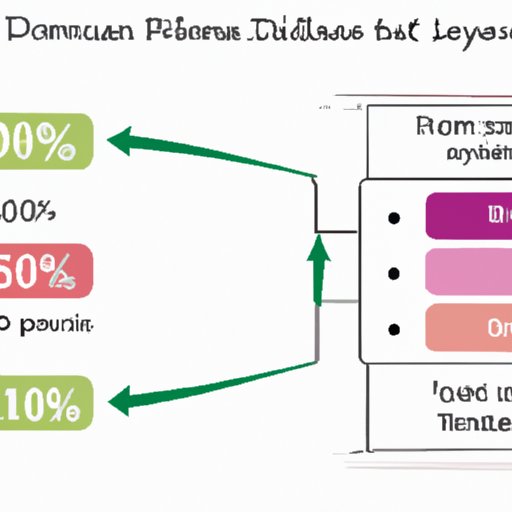
Introduction
Plasma donation has become increasingly popular in recent years, as people look for ways to earn extra money while also helping others. But how much do you get for plasma donation? It’s important to know this information in order to make an informed decision about donating. In this article, we’ll explore the compensation rates for plasma donation, the science behind plasma, and the pros and cons of donating.
How Much Do You Get for Plasma Donation?
The compensation rate for plasma donation varies depending on the donation center you go to. According to DonatingPlasma.org, the average compensation for donating plasma is $20 to $50 per donation. However, some centers offer higher rates for new donors, while others offer bonuses for frequent donors.
It’s important to note that there are eligibility requirements for donating plasma. You must be at least 18 years old, weigh at least 110 pounds, and be in good health. You’ll also be required to provide a valid ID and proof of address.
Additionally, there are limitations to how frequently you can donate plasma. The FDA recommends no more than twice per week, with at least 48 hours between donations. This is to ensure that your body has time to replenish the plasma that was donated.
The Science Behind Plasma Donation and Why People Donate
Plasma is a vital component of your blood that contains proteins and antibodies. It’s used to treat a variety of medical conditions, including burns, shock, and bleeding disorders. Because plasma is in high demand, many donation centers offer compensation for donors.
People donate plasma for a variety of reasons. For some, it’s a way to help others and give back to their community. For others, it’s a way to earn extra money. The plasma donation process takes about an hour, which makes it a convenient way to earn some extra cash on the side.
Factors That Affect Plasma Donation Compensation Rates
Several factors can affect the compensation rate for donating plasma. These include how the plasma is used, donor frequency and volume collected, geographic location of the donation center, and special programs or promotions.
Plasma can be used for a variety of medical treatments, and some uses are more valuable than others. Donation centers may offer higher rates for plasma that’s used for more expensive treatments.
The frequency and volume of plasma you donate can also affect the compensation rate. Some centers may offer bonuses for frequent donors, while others may increase the rate for larger volumes of plasma donated.
The geographic location of the donation center can also make a difference in the compensation rate. In areas with a high demand for plasma, donation centers may offer higher rates to attract more donors.
Finally, some donation centers may offer special programs or promotions that can increase the compensation rate. For example, some centers may offer a bonus for referrals or for donating during a certain time period.
Comparison of Prices From Different Plasma Donation Centers
Here’s a list of different plasma donation centers and their compensation rates:
- Octapharma Plasma: $50 for the first two donations, $30 for subsequent donations
- BPL Plasma: Up to $500 per month
- CSL Plasma: Up to $400 per month
- Grifols: Up to $200 per week
- KEDPlasma: Up to $400 per month
When comparing prices, it’s important to also take into account the location of the center as well as any special programs or promotions they may offer. Additionally, you should also consider the quality and reputation of the donation center.
Personal Experience of Donating Plasma and How Much Was Made
As a first-hand account of donating plasma, I can say that it’s a relatively easy and painless process. The staff at the donation center were very friendly and professional, and the process took about an hour from start to finish.
During my first donation, I was compensated $50 for my time. For subsequent donations, I received $35 per donation. Overall, I made about $200 in a month from donating plasma.
It’s important to note that while donating plasma is a relatively easy way to earn extra money, there can be some side effects. Some people experience dizziness or fainting during or after the donation process. It’s important to stay hydrated and eat a meal before and after the donation to help prevent these side effects.
Pros and Cons of Donating Plasma for Payment
The main advantage of donating plasma for payment is the opportunity to earn extra money. For some, plasma donation can be a convenient way to make extra cash on the side.
However, there are some disadvantages to consider as well. Plasma donation can be time-consuming, with donations taking about an hour each. Additionally, some people may experience side effects, such as dizziness or fainting, during or after the donation process.
Is it Worth it?
Whether or not donating plasma for payment is worth it depends on your individual circumstances. The compensation rates for donating plasma are relatively low, so it may not be worth the time commitment or potential side effects for some people.
However, for others, donating plasma may be a good way to earn extra money on the side. It’s important to make an informed decision and weigh the pros and cons before deciding if plasma donation is right for you.
Conclusion
Plasma donation can be a convenient way to earn extra money while also helping others. However, it’s important to know how much you can make for donating plasma and to weigh the pros and cons before making a decision. By considering factors such as the compensation rate, frequency and volume of donations, and potential side effects, you can make an informed decision about whether or not donating plasma is worth it for you.




